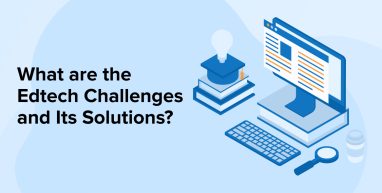
The surprising wave that hit our world and made us a pandemic-stricken world has at least done one thing absolutely right. It has changed the way we work, learn, and progress. The subtle art of integrating technology in the education sector brings unexpected yet successful outcomes for all types of Edtech startups and Learning management systems. The education sector has seen significant technological growth in the last 5 years, as evidenced by the KPMG report. This report shows the entire growth prospects of EdTech(Educational Technology) and the education market in India which will grow by at least eight times in the near future. As a result of which we see a lot of Edtech startups already making a way to success. The educational technology market has grown to become a US$1.96 billion market. Despite such humongous popularity, there are many problems and challenges that EdTech undergoes.
It would be insightful to know the challenges faced by Edtech industry.
1. EdTech Challenges
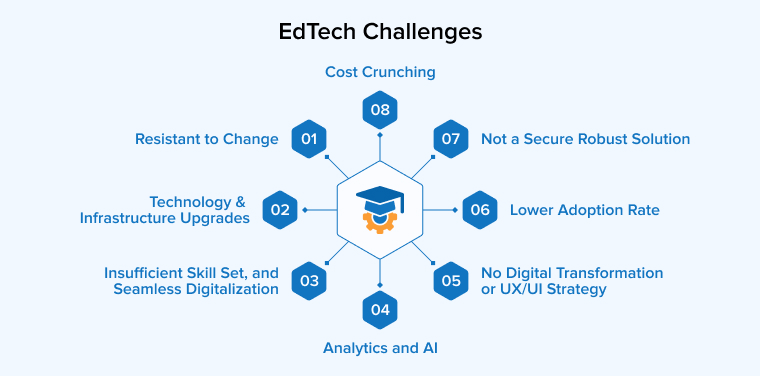
Following are the EdTech challenges:
1.1 Resistant to Change
Education services on the forefront tried many ways to stay ahead in the market. On the one hand, this field is always looking for new ways to improve and innovate. The educational software development industry aspires to make online learning more enjoyable for both teachers and students. The education business was a laggard when it comes to integrating new-edge technologies and services. There are many common Edtech challenges and barriers while there are many administration and instructors, on the other hand opposing it. Technology is frowned upon in many schools and institutions because of not considering education technology as a vital part of growth.
To resolve these challenges and be successful in providing Edtech solutions, Edtech companies must first understand the sector and all of its nuances. The key goal of education startups in the United States should be to demonstrate the genuine value of their service or product: what problems it will solve, what support it will provide, how it will boost cost-effectiveness and lower costs, and what opportunities it will provide.
1.2 Technology & Infrastructure Upgrades
If we retrospect to the time when we started working on our initial EdTech solution the video buffering, internet connection, online communication- everything was so rare. The educational sector needed a booster dose of technology in order to reach sky heights. Businesses started using technology in the right direction and hence, we can see how Edtech is flourishing.
High bandwidth is typically required for EdTech solutions, as video buffering and strong analytics are frequently required. For example, a whopping 95% of the issues we hear from consumers are related to internet speed at the user’s end, which we have no influence over. For an EdTech product to work, it requires a combination of high-speed internet and a reliable gadget, and India has yet to fully commoditize this coupling for its enormous population. EdTech companies can meet this problem by gradually adapting to the change and introducing a feature after the target audience has access to it.
Technology infrastructure has become an inseparable part of Edtech solutions for businesses to grow and lead and get ahead of competitors. From an infrastructural forefront, the prime necessities are a good internet connection, multi-feature apps, and 24*7 available study material.
1.3 Insufficient Skill Set, and Seamless Digitalization
The education sector demands their professionals be well-versed with any technology changes occurring in their disrupted world. The initial days of Edtech had multiple challenges such as lack of skills and understanding of the technology, unable to cope with other businesses, and several other challenges too. If you want your team to deliver best-in-class results, the only way to do it is by hiring the right set of skillful resources.
Digitalization is a process of upgrading your conventional methods by integrating new technologies or using tools that makes the output better and more effective. If you are a startup Edtech business, this part of digitalization becomes extremely tricky and complex back then. But now it is extremely hassle-free.
Edtech businesses know what different things they need to do in order to keep their business ahead of others in the league. So, initially and even now, there are businesses who face all these three types of challenges where they are not sure of whether they have the right skill sets or knowledge, and finally slewing the process of digitalization. To get the most out of their human resources, educational institutions, and businesses that invest in corporate education, the only way is to focus on continual learning and upskilling.
1.4 Analytics and AI
In order to understand the measurable benefits, Edtech must have comprehensive knowledge about Analytic solutions and understand what their consumers want. One of the most in-demand aspects of the tech solutions market is advanced analytics. A few persons should be optimized for analytics and data collection: the student, the administrator or teacher, and the organization’s leaders. Organizations will be able to gain a competitive advantage, automate operations, and choose more effective training programs as a result of this.
Some of the most common barriers that must be considered are:
- Limited resources for doing comprehensive analyses.
- Calculation of the net benefit to the student, including how grades, conduct, knowledge acquisition, and memory have improved; planning and anticipating outcomes;
- The process of creating Intelligent Instruction Assistance in order to deliver tailored tutoring or training students.
1.5 No Digital Transformation or UX/UI Strategy
Digital Transformation has been a challenge for almost all types of businesses. It is not easy to migrate your conventional business notes into a computerized system. Also, it’s not a day’s task. They need months of the plan which needs to be executed in a streamlined manner. When it comes to UX designing, the Edtech market allows you creativity and innovation, if you add too many features to your app and confuse your consumers, it won’t matter how innovative and unique it is. It’s also crucial to understand who your target audience is and design for them. If the app is geared at youngsters, for example, it should be simple to comprehend and navigate while also being entertaining and engaging. Of course, striking that balance is difficult. That’s why Edtech app testing is so important in assessing whether an app’s design is successful or not.
1.6 Lower Adoption Rate
This is one of the biggest challenges among businesses about how they should enforce consumers to adopt their products. In the initial years and even some businesses now refrain from adopting new technology because of the fear that there will be a lesser adoption rate. There can be many reasons for consumers not using our application.This reluctance can be linked to a lack of internet access or exposure, as well as a preference for the more “familiar” approach of classroom-based teaching and learning.
1.7 Not a Secure Robust Solution
Particularly during the pandemic outbreak, user privacy is a prominent topic. Many colleges and institutions are afraid that incorporating Edtech startup solutions into educational procedures may result in data loss or could lead to selling or advertising or distribution of student data or track users.
1.8 Cost Crunching
When you invest in most technological advancements it will cost high, and the education sector’s constant need for technical breakthroughs is no exception. Financing the infrastructure required for online or blended learning is one of the most difficult that education providers and facilitators face.
However, if educators made the first investment to join the EdTech line, the ongoing updates and bug fixes required to keep the accepted technology working well to support knowledge transmission will necessitate further funding.
One thing is for sure, that if there is a problem, there will definitely be a solution. This means Now that we have seen tech challenges, it’s time for us to see what solutions has technology got for Edtech.
2. Edtech Solutions

Your journey with developing an education learning app needs many other factors to shine in the Educational world. Some of the major factors include monetization, use of new-edge technology, right skilled resources, industry experts, and many similar factors. What other factors too should be included in order to make a unique and on-demand application. Start including these factors.
2.1 Smart Automation Integration
One of the most unique inventions of technology is automation. It has simplified most of the regular tasks and simplified the functional processing. Education is one of the industries that have yet to reach digital maturity. More than half of B2B firms are incorporating technology into their overall strategy irrespective of which industry they belong to and which size or scale of business they are. The modern educational institution can be constrained by significant time constraints and a lack of large finances.
Automated systems can partially or completely overcome these problems. When a workflow is automated, it can boost productivity while also lowering long-term expenses in a geometrical progression.
2.2 Bring Change-Resistant Solution with Edtech
Believe it or not, this Edtech industry is reluctant to adopt technology. Though that’s not the whole truth. There are many Edtech companies who inevitably make technology intrusions which benefit them in the future. The fact also states that schools, colleges, and universities strive to develop outstanding leaders and innovators at the same time are resistant to change. Most educational institutions are content with a classic book and whiteboard method. Furthermore, the majority of teachers and administrators see technology as a danger to their jobs and refuse to accept it.
This innovative solutions can responsibly demonstrate the true value and benefits of EdTech. It’s vital to remember that in the education profession, change is rarely easy. To persuade the skeptics, you’ll need to build a compelling case. It’s critical to highlight your product’s use while also emphasizing its unique features.
2.3 Applying Innovations to Emerging Technologies
You cannot imagine developing an application without these leading technologies like artificial intelligence, the Internet of Things, virtual reality and augmented reality, chatbots, and machine learning are just a few examples. The Education industry is a fairly open industry now since it enables new technologies to make changes for it. Educators are open to experimenting with and adopting a wide range of new technology that we already saw a lot.
Also, you can use Cloud computing which is an essential cornerstone of digital transformation because cloud-delivered operations provide organizations with enhanced mobility, process efficiency, and cost savings.
2.4 Hiring and Training Highly Skilled Employees
If there is a case where you are convinced with the talent pool you have in the educational sector, then you don’t have to look for resources that would make a difference for your business. But that’s not the case every time and hence because of lower skills, one might think of filling the digital skills gap in depth. If we’re talking about educational institutions, their objectives should be to upskill their graduates so that they can be successful at the workplace.
Companies that engage in corporate learning should establish a digitally-driven learning program that allows employees to gain skills. This will enable them to advance their positions within the company and they would have a long way to go with corporate change.
The investment in internal employee training and development is extremely beneficial. It also helps if your company’s communication is well-oiled; this will ensure that educational processes are exact and that your efforts are justified.
3. Conclusion
After going through this insightful blog, it’s time to act now that you’ve learned about the top Edtech issues and opportunities. It doesn’t matter whatever niche you choose, keep in mind that Edtech is here to make a difference. Improved learning, new skills, and greater career possibilities are what people really need and an Edtech can offer you all of it.


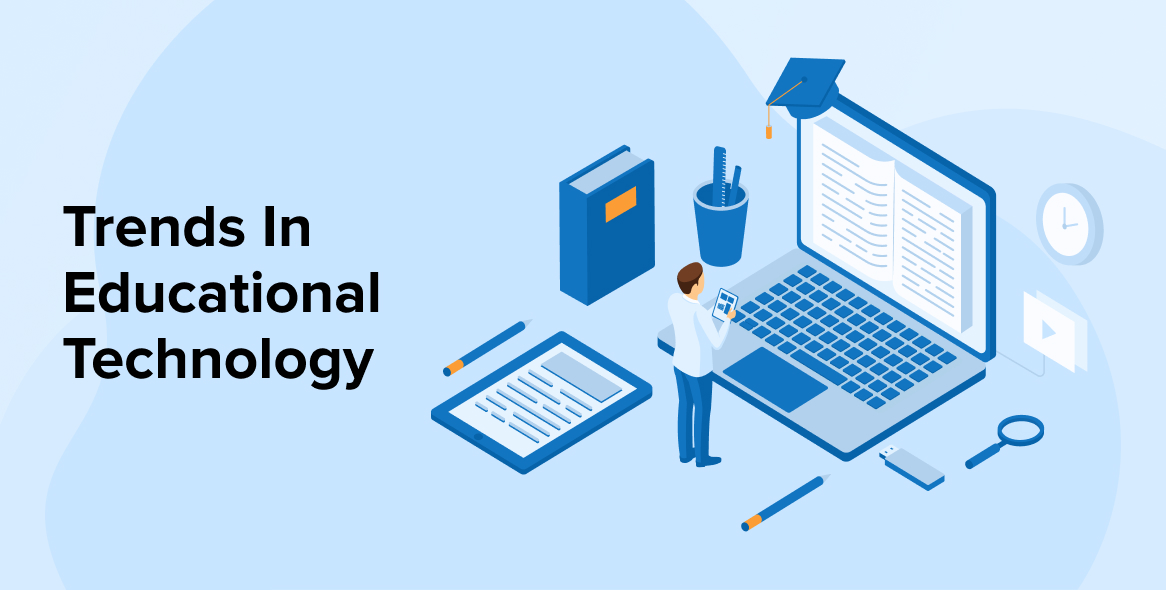
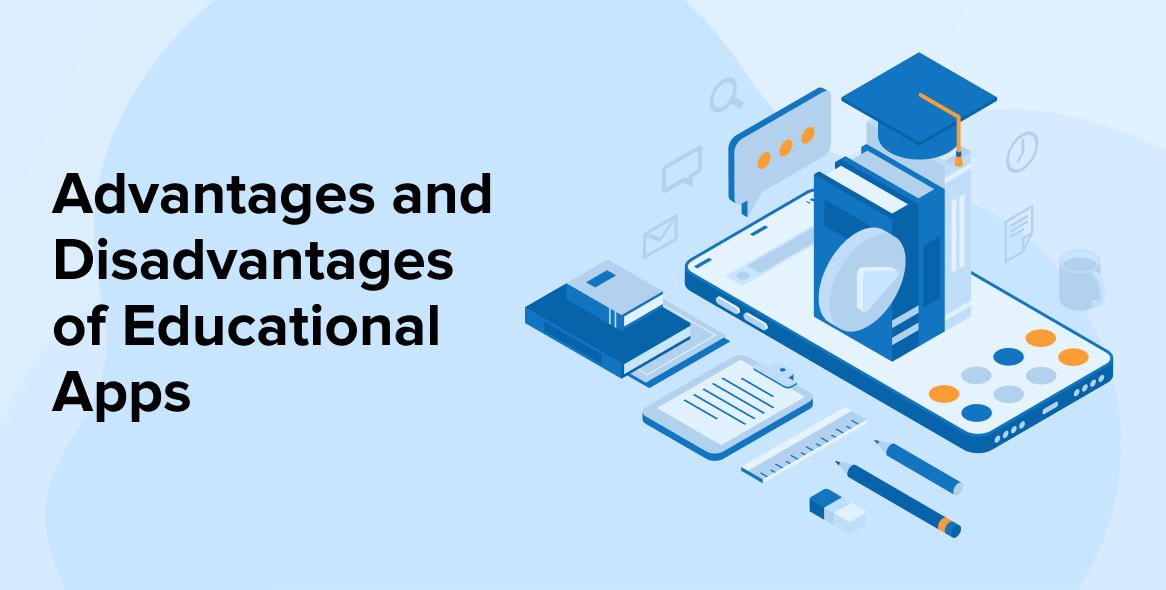
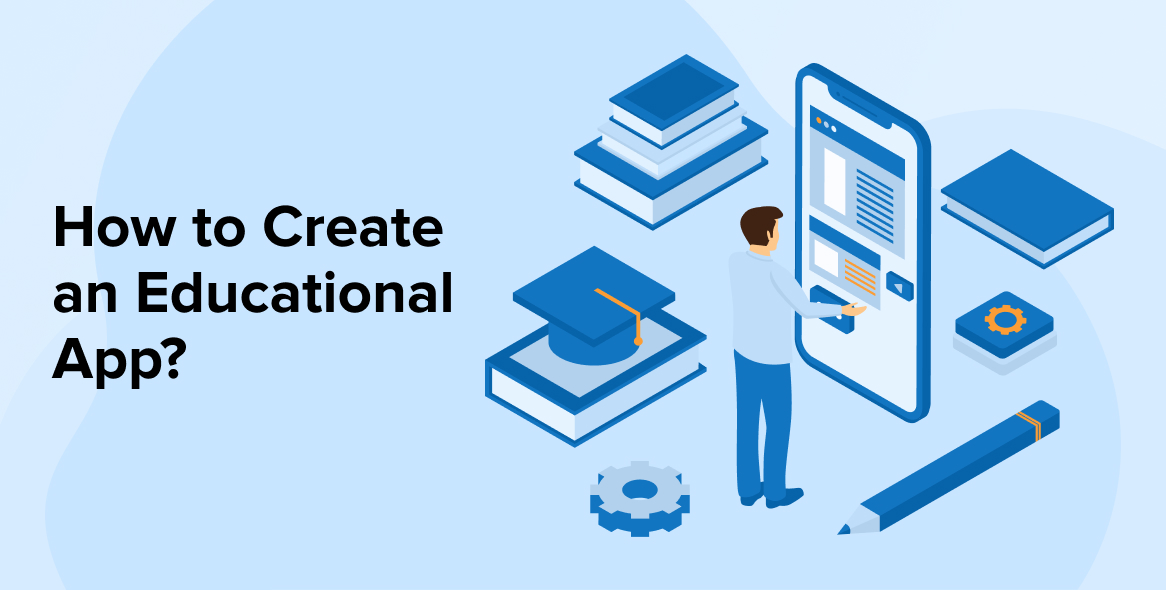

Comments
Leave a message...